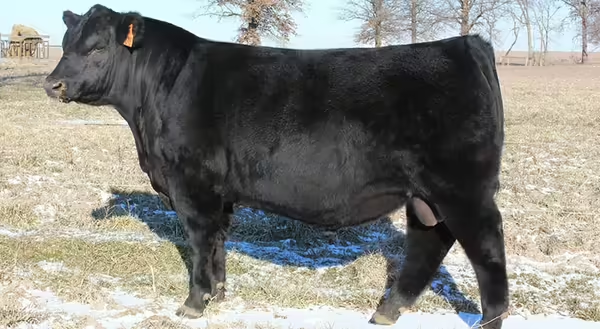
A popular question this time of year is “What will a good bull cost me?.” My go-to answer is usually… “How much revenue loss would you have from a pasture full of open cows?” After all, we often de-value the role of the bull. We forget that he is a crucial part of the equation to making our product.
Now, the question is a good one to ask. Especially after watching calf prices climb seemingly all of 2024 and the prices paid for bred heifers at year-end, it is only logical to wonder what a good bull will cost this spring.
Old rules of thumb are good to reflect on. For instance, “2 times the value of a fat steer” or “4 to 5 times the value of a feeder calf” are both common measures used by old timers to determine the value of a bull. So, I tested these figures with historical prices from the Illinois Performance Tested Bull Sale and prices paid for feeders and fats from National Agricultural Statistics Service (NASS). As it turns out, using values from 2004 to 2024 (last 21 years) the average bull price was 4.2 times the value of a feeder calf and 2.2 times the value of a fat steer. Looks like those old rules of thumb work pretty well.
Using these multipliers, we can speculate to the average price of bulls this coming sale season. Looking at recent market reports, 5 weight feeder calves are bringing $3.25 or more. Thus, value of a 5-weight feeder calf is conservatively $1,625. History tells us 4.2 times that value will get us close to the average. Thus 4.2 x $1,625 = $6,825 for an average bull price.
At the time of writing this article, a current price for fat steers weighing 1450 lb. is $1.92. Therefore, the math tells us a fat steer values out at nearly $2,784. The previously stated multiplier of 2.2 times the value of a fat steer would yield an average bull price of just over $6,125. Thus, we have a calculated range of $6,125 to $6,825 for the average bull price.
That said, there will be many bulls that bring in excess of those figures. So, what factors contribute to bulls bringing more than the average? Are they worth the extra money?
For simplicity, let’s say a bull breeds 25 cows per year for 4 years resulting in 100 calves over his lifespan. With these conservative assumptions, even a small improvement in a valuable trait can greatly increase a bull’s value.
For instance, Calving Ease (CE) EPD is defined as the difference in percentage of unassisted births. So, let’s say you purchase a bull that is 5 points better in his CE than the breed average for current sires. For both Angus and Simmental that would mean purchasing a bull in the top 10 % of the breed for that trait… not an unrealistic buy. The 5 point improvement should translate to 5% more unassisted births. In the real world, it’s fair to say half of assisted births don’t make it. Thus, a 5% improvement in CED could easily translate to 2.5% more calves. Out of 100 calves sired over a lifetime, that’s 2.5 more calves. The added value from improved CE would be just over $4,000 (2.5 more calves x 500 lbs. x $3.25/lb.).
The most common example for added value of a bull is improved EPDs for weaning weight (WW). Let’s say you purchase a bull with a WW EPD of 74 (breed average for Angus is 64). That’s 10 additional pounds at weaning per calf. If the bull sires 100 calves in a lifetime and a pound is worth $3.25, then the result is $3,250 more income over his lifetime when compared to the average of current sires.
Don’t only look at output traits. If you plan to retain daughters as replacements, maternal traits need to be considered. Traits such as heifer pregnancy, calving ease maternal, sustainability or sustained cow fertility, cow energy requirements, and others can add long-term value to the cowherd.
When selecting your next herd sire, identify the traits that can add dollars to your operation. Don’t sacrifice functionality, structural soundness, docility, and other traits that can affect longevity. View purchasing a bull as an investment and treat it as such. Investing in a good bull that can improve profitable traits in your herd can allow your farm to be more competitive no matter the market dynamic.
Bottomline, bulls are a significant contributor to profit or loss in your cattle herd. The have an impact now and for years to come if you are retaining replacement females. Look for traits that hold value in your market. Find a bull that can inject those traits. The “expense” of a bull can be a great investment in the future of your cattle herd.
*Originally published in Illinois Beef magazine